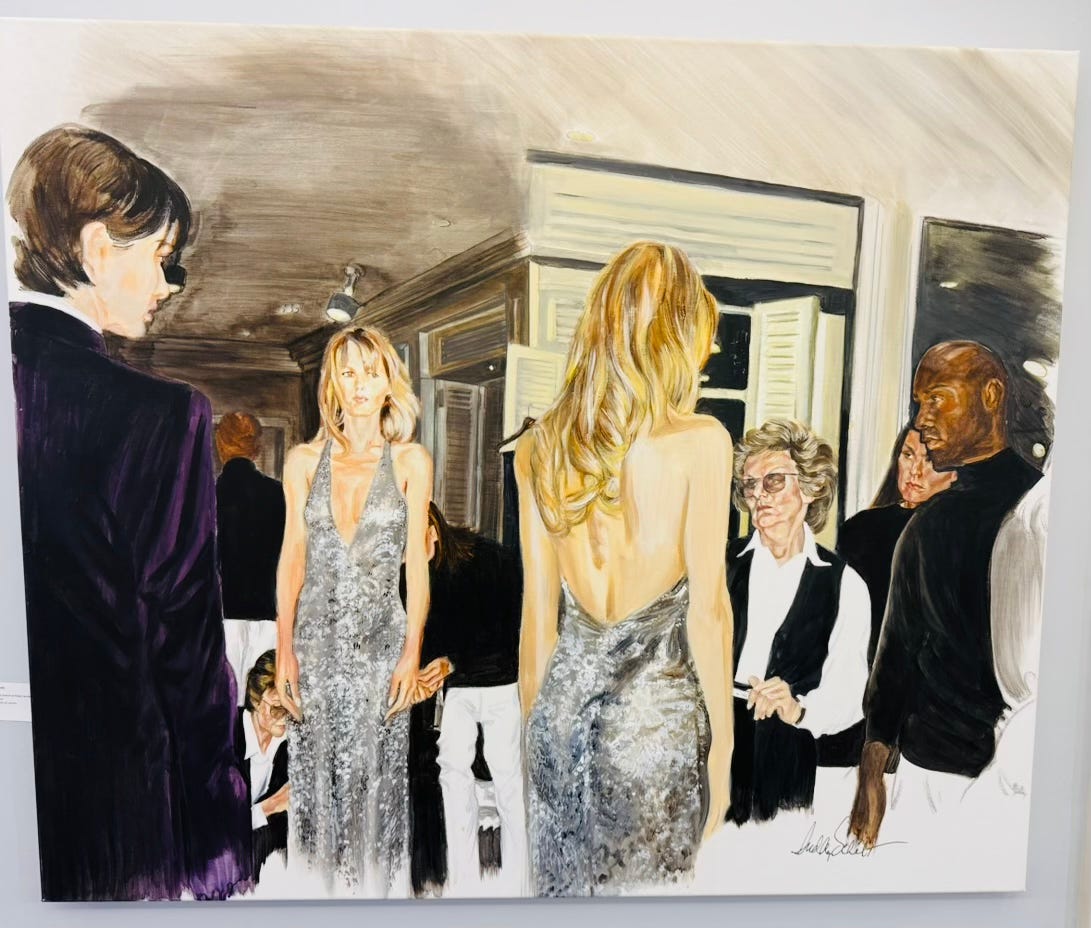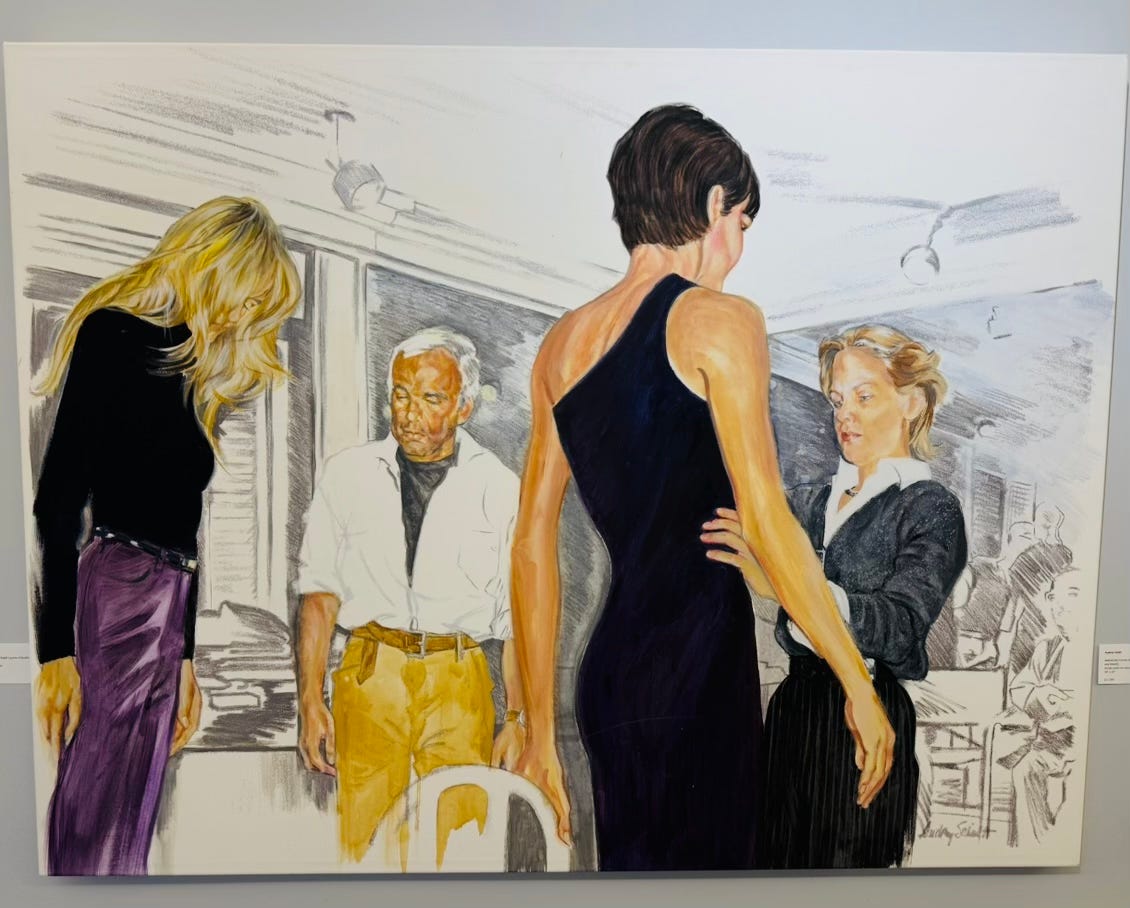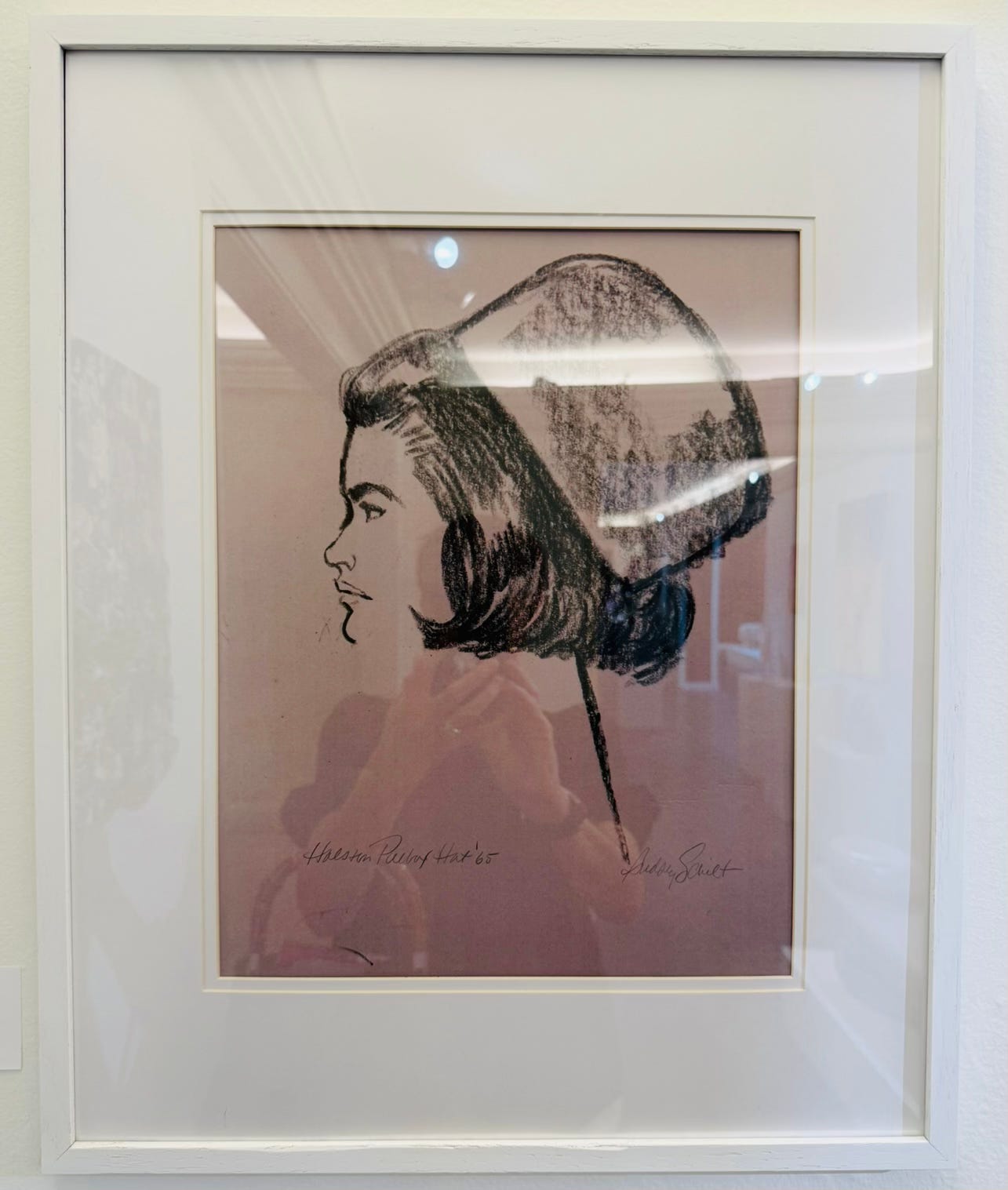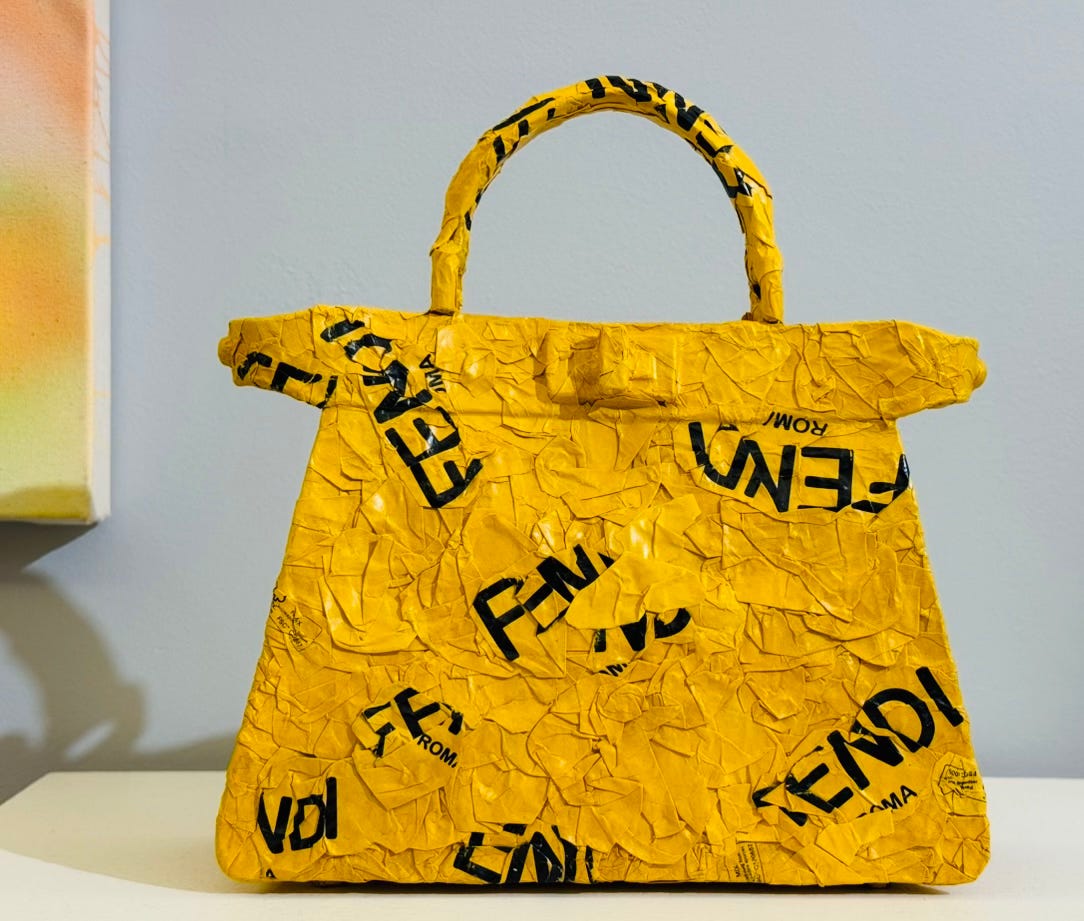How to Make a Great Escape
Sanctuary in the City.
If we’re lucky, each of us has a secret place where we go to escape the world, even for just a bit.
I have a list of many in Brooklyn. But in Manhattan, Bergdorf Goodman’s Seventh Floor is my spot.
For so long, Bergdorf’s Seventh Floor has been every stylish New York hostess’ in-the-know Salon staging source. Now adding to the mix, BG’s Seventh Floor has evolved into a unique-in-all-the-world art gallery.
The current installation is titled “A Room Just So”, curated by Natasha Roberts, and runs through August 4. It features artists, to include among others: Audrey Schilt, CHiNGLiSH WANG, Anne Féat-Gaiss, and Roxane Lahidji.
It’s ironic that I now visit Bergdorf Goodman to let my mind unwind, since my existence there, eons ago, was anything but “relaxing.”
In the 90s, I worked in Bergdorf Goodman’s Fashion & PR Office. There were six of us: three in the Fashion Office, three in Public Relations, and we sat together in a tiny annex on Bergdorf’s Third Floor, just above where Van Cleef & Arpels still sits at 57th Street and Fifth Avenue.
Day to day in our office:
We were the front line contact for BG’s Corporate C-Suite which sat way high up, five floors above.
We attended the New York fashion shows, representing the store (my boss also went to the shows in Paris, Milan, and London).
We hand-picked the new designers who would soon be sold at Bergdorf Goodman.
We decided which designer pieces would appear in Bergdorf Goodman’s upcoming ads in places like Vogue and The New York Times.
We decided which designers would appear in our Fifth Avenue (and 57th & 58th Street) windows. And also when they would appear in the windows, since we created the store’s master calendar of their appearances.
we selected the pieces to be photographed for Bergdorf Goodman’s seasonal print catalogue. We sent over written styling “thoughts” for each look.
I say “we.” But it was really my blessedly decisive French boss, Nicole, in her role as Bergdorf Goodman’s Fashion Director, who decided most of the above.
I adored and admired Nicole, assisted as her right hand, and learned a lot.
Last, but certainly not least, “we” organized super splashy, private, designer-hosted, in-house fashion runway shows. Always with a start time at 8:30 am, right before the store opened at 10:00 am, and usually on the store’s beloved Third Floor.
We invited Bergdorf’s top clients to these exclusive events, so they could purchase from the collection immediately following — with the designer still on hand. We invited fashion editors from places like Women’s Wear Daily (now WWD), Vogue, Harper’s Bazaar, New York Magazine, and Avenue Magazine. So they could gossip to each other about our events, and hopefully write about them.
The physical layouts for these shows could be compared to the set up for a non-church wedding; rows of (rental) Gold Chiavari Chairs on either side, and in the middle a four or five foot wide aisle, which became our fashion show “runway.”
At one of these events, we celebrated the arrival in-store of John Galliano’s Spring 1995 collection, which would be offered exclusively at Bergdorf Goodman.
And, boy, it was it a moment.
John Galliano hosted, the show was styled by the super cool Amanda Harlech, and models included Naomi Campbell (who got lost during the show. After making a wrong turn at the end of our “runway” she accidentally walked into a clothing stock room. Where she went missing for a long five minutes. No one could find her — to dress her in her next runway look — which caused a noticeable gap in the show).
Kate Moss was also supposed to walk for us that morning. But at the crack of dawn on the day of our event, our P.R. Director’s phone rang. It was Kate’s booker, calling with the news that Kate could no longer walk in “John’s show.”
We were told she was at a police station or something, somewhere in NYC, with her then-boyfriend Johnny Depp.
In this pre-social media moment, it took us until about 3 pm to learn more, when The New York Post and others started to get the story. The gist was that Depp had overnight gone into a rage, destroyed their hotel suite at The Mark, and the police had been called.
But that morning, we were just sad to not see Kate.
At the time, the store operated entirely under one roof. Our office was the store’s creative nucleus, so we worked closely with:
every BG Retail Buyer (to include those at Bergdorf Goodman Men’s); in ready-to-wear, shoes, accessories, cosmetics, and home.
BG’s Visual Team, who each week installed and styled the store’s windows on Fifth Avenue plus 57th/58th Streets (my New York studio apartment was almost entirely decorated with window staging props given to me by my friends in BG’s Visual Department, from their annual “workroom spring cleaning”; odds and ends of furniture, vases, sculptures, plus assorted “objets d’art”)
BG’s Advertising Team, who shot Bergdorf’s ads that ran in The New York Times, Vogue, Harper’s Bazaar, New York Magazine, etc.
BG’s print Catalogue Team, who published seasonally
Bergdorf Goodman’s fleet of Floor Managers and Sales Associates. Plus its tiny team of Personal Shoppers (about six people), a number of whom back then were making six figures a year in commissions.
BG Staffers who managed our stock inventory rooms
BG Security
BG’s basement Messenger desk
BG’s Mail room
BG’s Janitorial staff
BG’s Loading Dock team on 58th Street, which sat (and still sits) just across from the front door of The Plaza Hotel
We even knew people who worked in Bergdorf Goodman’s Accounting Department.
And when we needed to reach any one of them above, for any reason, I was the one who had their in-store phone extension memorized by heart.
In The Devil Wear’s Prada, it was: “I’ve got Patrick!” At Bergdorf Goodman, it was me declaring: “I’ve got Paisley!”
But what was one department we never phoned back then at Bergdorf Goodman? Well, that would be Bergdorf Goodman’s “Art Gallery Department.” Because there wasn’t one.
But now there sure is, and it’s a great visit.
Some of the works featured in its current installation are highlighted below. But first, a bit more about Audrey Schilt, whose work also follows.
Audrey Schilt
Audrey Schilt began her career as Halston’s (yes, Halston’s) sketch artist as he was launching his custom hat business, in his own workshop/boutique, at Bergdorf’s.
Aged 22, Audrey sketched Halston’s design ideas for Jackie Kennedy, to include a pillbox hat. Many of Schilt’s sketches for/of Jackie Kennedy were eventually sold, along with the hats themselves, at Sotheby’s.
Audrey also sketched designs for Halston’s long list of other illustrious clients. And she drew the images for Halston’s larger-than-life full page advertisements, which ran in places like The New York Times and Vogue.
In the 1980s, Audrey’s work caught Ralph Lauren’s eye, who hired her as his “conceptual artist.” She worked by Ralph’s side for 22 years, interpreting and illustrating his ideas. Along the way, Audrey became Creative Director of Collection, VP at Ralph Lauren.
Highlights of her work there include the now iconic Ralph Lauren pink silk gown that Gwyneth Paltrow wore to accept her Oscar in 1998. Audrey also sketched designs for Princess Diana, and others.
And, among other things, Audrey sketched the image on Ralph Lauren’s Fashion Hall of Fame plaque.
Below, please find examples of Audrey’s work currently on offer at Bergdorf Goodman, plus other highlights from “A Room Just So” from CHinGLiSH WANG, Anne Feat-Gaiss, and Roxane Lahidji.






What I’m reading this week:
Jane Bertch’s piece On ‘making’ and ‘spending’ time in Paris: What I’ve Learned About France’s Most Sacred Currency - Time.
Jane Bertch is a Chicagoan who moved to Paris over twenty years ago for her job in banking, then pivoted sixteen years ago to open her own cooking school à Paris.
You can follow Jane’s journey in The French Ingredient, her memoir published in 2024.
Coming soon:
My thoughts on former New York Times Food Critic Ruth Reichl’s The Paris Novel. Fashion, Food, Wine, Art, Literature, History. All delivered in fantasy form, and set in 1983 Paris. A brilliant and stylish escape from the horror of our reality right now.
With American ignorance existentially on the rise, The Paris Novel reminds us that the individual cultivation of cultural fluency has never been more critical as a concept.
Our protagonist Stella steps into elegance, grace, inclusion, and refinement; qualities that U.S. Republican voters appear to care not at all about.
The Paris Novel reminds us that seeing the world through a well-informed internationalist’s lens reaps beautiful rewards, and ones that last a lifetime.


So honored to be on your reading list! Thank you!
David: All I have to say about this is: YES!